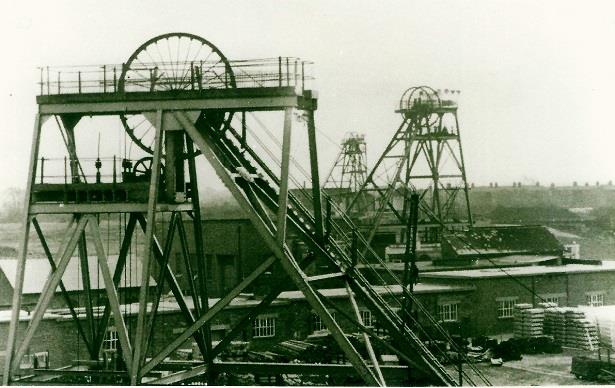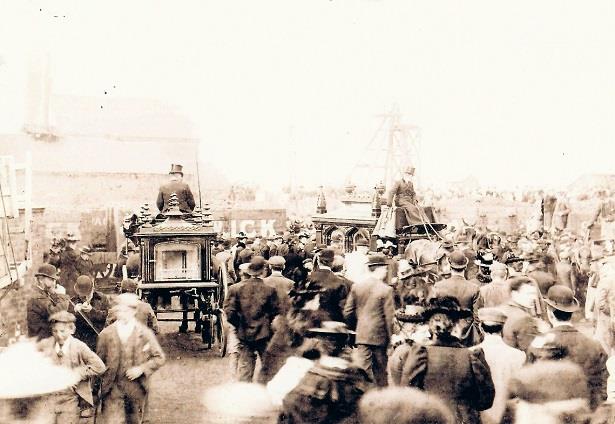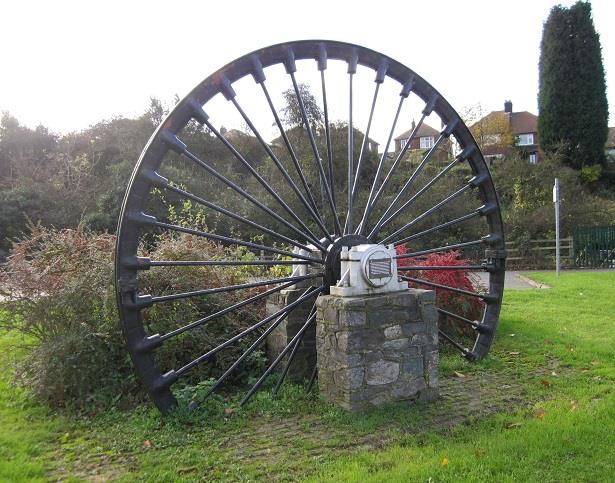
Whitwick Colliery
Much of the site of the former colliery is now a retail park which includes the Morrisons supermarket
Whitwick Colliery, sunk near Long Lane, was Leicestershire’s first deep mine. The instigator was William Stenson (1771 – 1861), originally from Coleorton, who, with two partners formed Stenson and Company to develop the mine. The first coal was brought to the surface in 1828. In order to sell the coal in Leicester, an efficient method of transport was needed. George Stephenson was approached with a scheme to construct the Leicester to Swannington Railway. Stephenson invested in the railway, appointed his son Robert as chief engineer and developed Snibston Colliery. The Railway reached Long Lane in 1833. Stenson & Co advertised for miners and two more shafts were sunk.
By the 1840s, over two hundred men and boys were employed and the colliery was having a significant impact on the economic development and character of Whitwick. There were some difficult times but overall, the colliery prospered. Stenson retired in 1860; in the 1870s, Whitwick Colliery Company Ltd was created. By this time there were five pits on the site and another mining fire clay for the company’s extensive brickworks.
Mining continued in the 20th century. At Nationalisation in 1947, Whitwick Colliery had the highest productivity per man shift in the South Midlands area. Eleven hundred men were employed there. Peak production came in 1969-1970. Underground, workings were connected to Snibston in the 1960s and a merger with South Leicester Colliery occurred in 1984. The last shift to turn coal was on 3rd July 1986. Whitwick Colliery had been one of the most productive and efficient mines in the country.
Members of Whitwick Historical Group have a keen interest in the history of Whitwick Colliery and other local mines, including details of former miners and fascinating objects and memorabilia linked to coal mining. They are always happy to share information with interested parties.
The Whitwick Colliery Disaster, 19th April 1898
The Whitwick Colliery Disaster, 19th April 1898

Crowds waiting for the funeral procession for the first eight recovered bodies
The service was held at Christ Church, Coalville, 24th April 1898
Leicestershire’s worst mining disaster occurred in No.5 pit at Whitwick Colliery. This was a dry dusty pit that had been worked for sixty years. The disaster was the result of a “gob” fire during the night shift. Forty-two men were underground, including a boy of thirteen. Many were related to each other or close neighbours. Most of the miners were trapped at workings beyond the fire. There were only seven survivors. The victims died of suffocation as a result of carbon monoxide poisoning.
Attempts were made to recover the bodies but twelve remain underground. The tragedy left twenty-seven widows and eighty-four children under the age of thirteen.
The Pit Wheel

The pit winding wheel in the City of Dan
A memorial to all local miners and quarrymen
When Whitwick Colliery closed, members of the Whitwick Historical Group thought that there should be a permanent and appropriate tribute to local miners in a prominent location in the village. A new winding wheel, held in reserve at the colliery, was deemed to be an ideal memorial. Assistance was sought from the then owners of Whitwick Quarry, Amalgamated Roadstone Corporation Ltd. The outcome is the winding wheel supported in a granite column with a brass plaque on each side which commemorates both quarrymen and miners. The dedication service and unveiling took place in October 1990.

